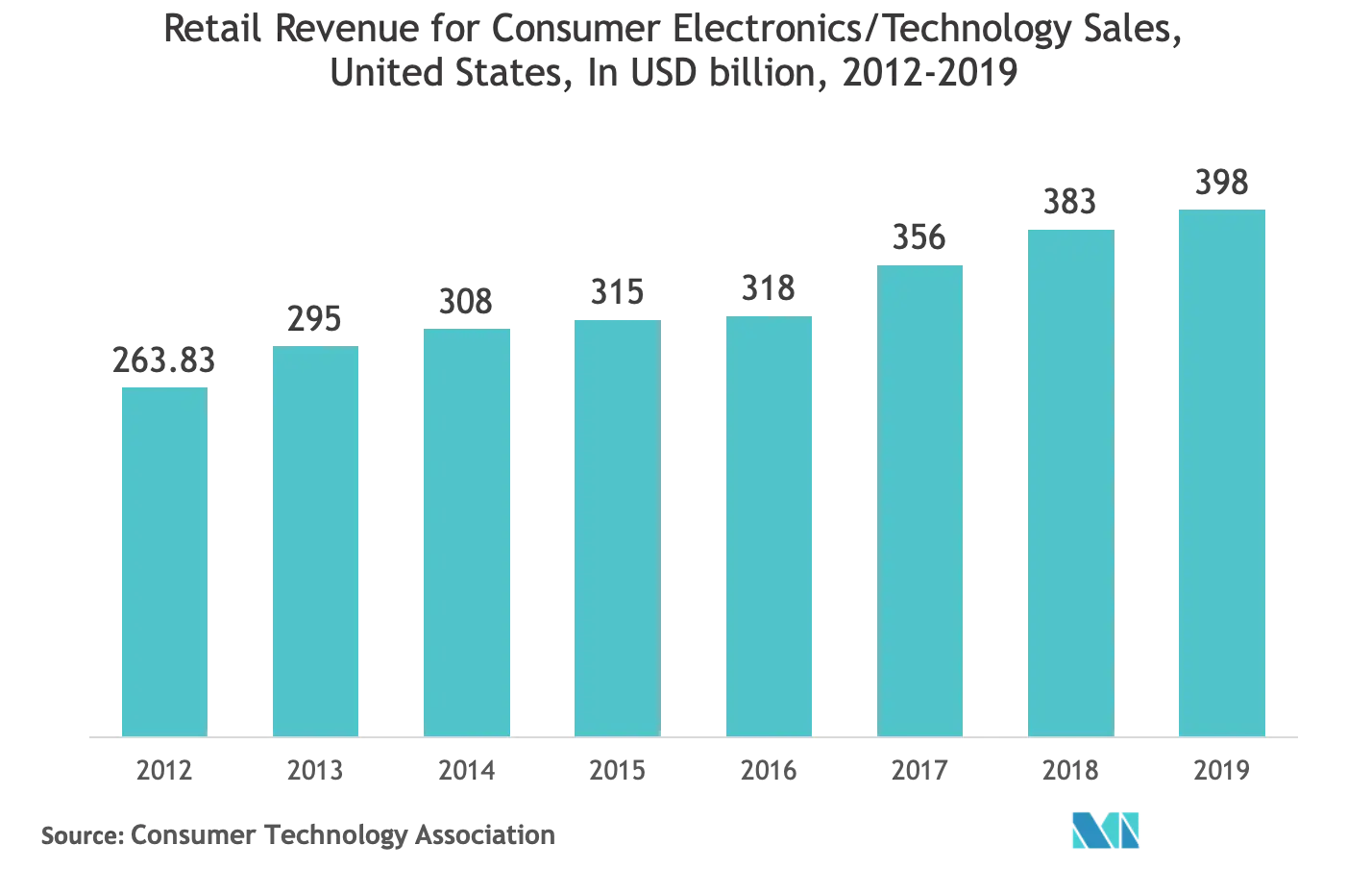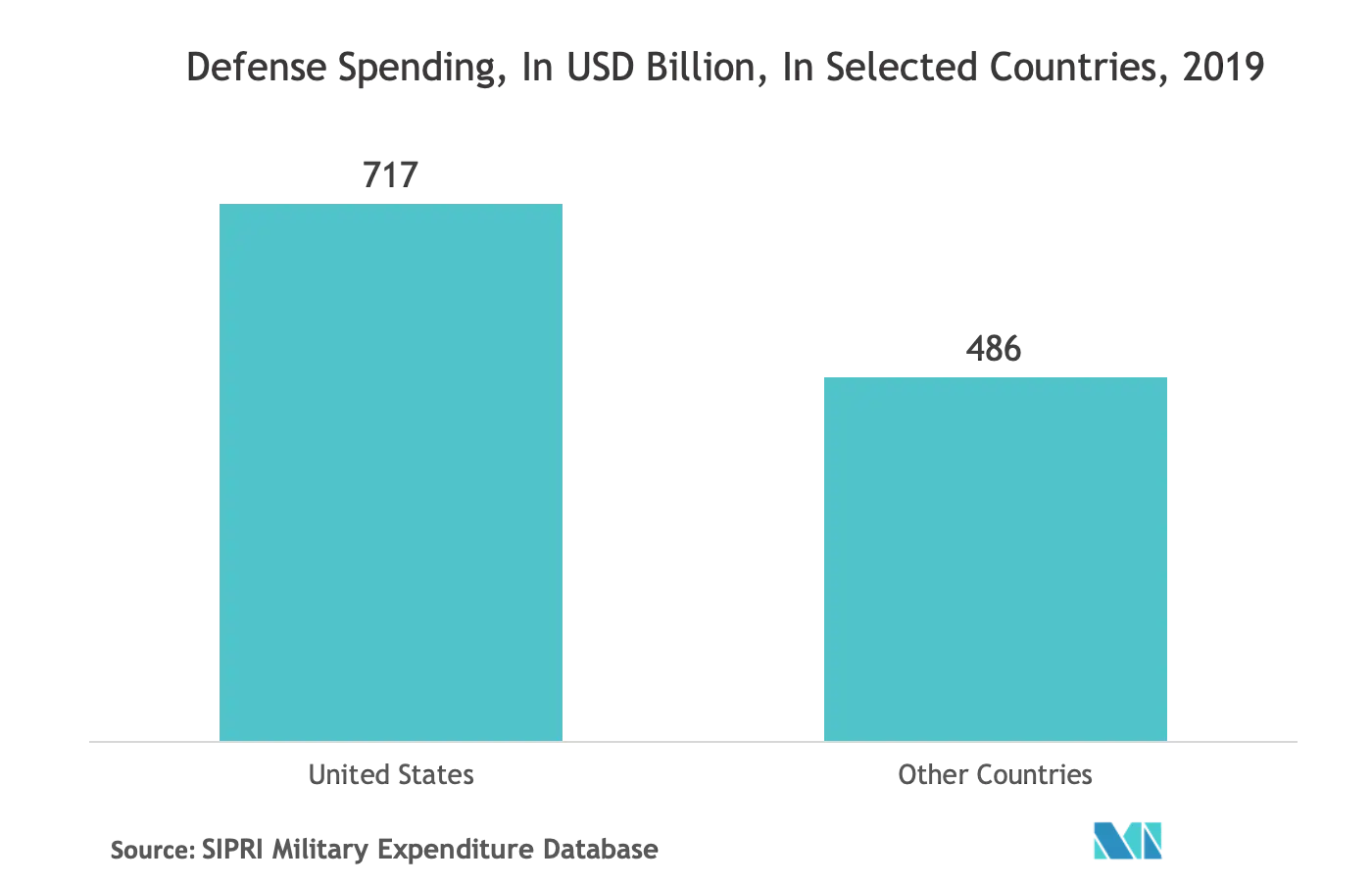Market Trends of North America Fingerprint Sensor Industry
This section covers the major market trends shaping the North America Fingerprint Sensor Market according to our research experts:
Consumer Electronics Industry to Augment the Market Growth
- Owing to the increasing demand for biometric technology for access management, the fingerprint sensors demand in consumer electronics is expected to witness significant growth over the forecast period. Increasing the deployment of biometrics for enhanced security has also emerged as one of the significant growth drivers in this market.
- Smartphones are one of the most significant contributors to fingerprint sensors' consumption in the consumer electronics sector. In recent years, the United States witnessed consistent growth in smartphone sales.
- The United States is also experiencing huge investments from smartphone manufacturers. For instance, in 2018, Apple announced that it might contribute USD 350 billion into the US economy over the next five years, which comprise new investments and its existing spending with domestic companies for supply and manufacturing.
- In addition to this, the smart wearable's sales are increasing exponentially, and the penetration rate of the technology compared to the smartphone is significantly less; this offers more prominent space for growth over the coming years. Smart wearable devices, such as watches, are increasingly adopting fingerprint scanners, and it can be an additional feature in unlocking applications on the connected smartphone device. Such developments in the market are expected further to influence the demand for fingerprint sensors in the market.

United States Holds Significant Market Share
- Various government initiatives across the region are investing in building civil identity systems with the incorporation of biometrics, and such projects are on the rise. The applications of such systems include universal identity, law and order, border security, and many more. The United States uses its Office of Biometric Identity Management (OBIM) for the supply of the technology for storing, matching, and sharing of biometric data. The country's system, which is called the Automated Biometric Identification System or IDENT, is operated by OBIM and currently holds 200 million unique identities.
- The players in the region are focused on product development and innovation. For instance, in December 2019, the iPhone was reported to use an ultrasonic fingerprint scanner from Qualcomm for one of its 2020 smartphone models. Apple has been partnering with GIS – a Taiwanese touchscreen manufacturer for under-display technology, including fingerprint sensors. Recently, Qualcomm has also released its latest 3D Sonic Max ultrasonic fingerprint reader.
- The CBP officials have mentioned that they have planned to deploy these scanners at over 5,000 workstations at the United States’s ports of entry. Integrated Biometrics LLC manufactures its fingerprint sensors, which integrates with its fingerprint scanners.
- According to Naval Recruiting Command, the US Navy has started using fingerprint biometrics to fill out the form of new soldiers to the service, and by replacing legacy pen and ink form signing, which is expected to optimize several operational costs by eradicating the use of around 36 million sheets of paper annually. Also, the US Army Combat Capabilities Development Command (CCDC), a subsidiary agency of Army Futures Command (AFC), is developing a multifactor system including biometrics for identifying and authenticating soldiers in the field and authorizing access to network-based capabilities. Such initiatives are anticipated to increase the use of fingerprint sensors in the region.


